Thom Booth
@thombooth.bsky.social
NNF Postdoctoral Fellow at DTU Biosustain. Interested in the discovery and evolution of biosynthetic pathways.
Pinned
Thom Booth
@thombooth.bsky.social
· Jul 9
Evidence supporting the first secondary chromosome in actinobacteria as a hallmark of the Embleya genus
Embleya is a genus within the family Streptomycetaceae, a group of actinobacteria with outstanding capacity for production of specialised metabolites and a strikingly complex life cycle. In this work, we sequenced the complete genome of the new species Embleya australiensis MST-11070 and validated the assembly using optical mapping. The genome of E. australiensis MST-11070 consists of a 7.1 Mb linear chromosome and three additional replicons, including a 4.2 Mb linear replicon, EEC1, significantly larger than all previously described secondary replicons from bacteria. EEC1 is typified by its similar composition to the chromosome in terms of GC-content, codon usage and gene functions. It also carries terminal inverted repeats identical to the chromosome. EEC1 is enriched in biosynthetic gene clusters (BGCs), including the only copy of the BGCs for the spore pigment and the surfactant peptide SapB, metabolites essential for the organism's lifecycle. EEC1 contains an origin of replication with at least some chromosomal properties, and its replication is likely to depend on functions provided by chromosomally located genes. Further comparison of Embleya spp. genomes suggests that EEC1-like replicons are conserved across the genus, in contrast to other known large linear extrachromosomal replicons (megaplasmids) in the order. EEC1 is thus a hallmark of the Embleya genus and is central to its evolution within the Streptomycetaceae family. We propose EEC1 as a secondary chromosome, distinct from previously described secondary chromosomes that utilise plasmid-like replication mechanisms (chromids) and the largest secondary replicon reported in bacteria, to date. ### Competing Interest Statement Ernest Lacey is a Founder, Board Member, and the Managing Director of Microbial Screening Technology Pty. Ltd. The authors declare no competing financial interests. Biotechnology and Biological Sciences Research Council, https://ror.org/00cwqg982, BB/P021506/1, BBS/E/J/000PR9790, BB/X01097X/1, BB/M011216/1 Novo Nordisk Foundation, https://ror.org/04txyc737, NNF22OC0078997
www.biorxiv.org
Our new preprint is out! EEC1 is a massive 4.2 Mb secondary chromosome from Embleya australiensis. Conserved across Embleya, these are the first replicons of their kind in Actinobacteria and the largest secondary replicons in bacteria identified to-date!
1/6 🦠🧪🧬🔬
www.biorxiv.org/content/10.1...
1/6 🦠🧪🧬🔬
www.biorxiv.org/content/10.1...
Reposted by Thom Booth
1/ 🔬 Our work, "Dynamic transitions of initiator binding coordinate the replication of the two chromosomes in Vibrio cholerae", is now published in Nature Communications.
Here's a thread on how we think Chr1 and Chr2 replication is coordinated in Vibrio. 🧵
Link : www.nature.com/articles/s41...
Here's a thread on how we think Chr1 and Chr2 replication is coordinated in Vibrio. 🧵
Link : www.nature.com/articles/s41...

January 9, 2025 at 12:32 PM
1/ 🔬 Our work, "Dynamic transitions of initiator binding coordinate the replication of the two chromosomes in Vibrio cholerae", is now published in Nature Communications.
Here's a thread on how we think Chr1 and Chr2 replication is coordinated in Vibrio. 🧵
Link : www.nature.com/articles/s41...
Here's a thread on how we think Chr1 and Chr2 replication is coordinated in Vibrio. 🧵
Link : www.nature.com/articles/s41...
Reposted by Thom Booth
Then @thombooth.bsky.social used the presence/absence of known telomere proteins to identify a potentially new telomere protein which is linked to the Sg2247 class telomere, which previously did not have an identified maintenance system (notice the dot in the red circle)

October 15, 2025 at 10:24 AM
Then @thombooth.bsky.social used the presence/absence of known telomere proteins to identify a potentially new telomere protein which is linked to the Sg2247 class telomere, which previously did not have an identified maintenance system (notice the dot in the red circle)
Did you know most 'complete' Streptomyces genomes are missing their telomeres?
Thanks to David and Tues hard work, we now have a new tool to recover them!
A pleasure to be part of a team. :)
🦠🧪💻 #microsky
Thanks to David and Tues hard work, we now have a new tool to recover them!
A pleasure to be part of a team. :)
🦠🧪💻 #microsky
Bacterial telomeres are common, just not so much in RefSeq 'complete' genomes. But they can be added by the new tool David Faurdal wrote. I am thrilled to see this out as a preprint here: www.biorxiv.org/content/10.1... @tilmweber.bsky.social @thombooth.bsky.social

October 24, 2025 at 1:53 PM
Did you know most 'complete' Streptomyces genomes are missing their telomeres?
Thanks to David and Tues hard work, we now have a new tool to recover them!
A pleasure to be part of a team. :)
🦠🧪💻 #microsky
Thanks to David and Tues hard work, we now have a new tool to recover them!
A pleasure to be part of a team. :)
🦠🧪💻 #microsky
Reposted by Thom Booth
Check out this new amazing preprint by David, @tuesparholt.bsky.social , @thombooth.bsky.social, and @tilmweber.bsky.social!
Bacterial telomeres are common, just not so much in RefSeq 'complete' genomes. But they can be added by the new tool David Faurdal wrote. I am thrilled to see this out as a preprint here: www.biorxiv.org/content/10.1... @tilmweber.bsky.social @thombooth.bsky.social

October 20, 2025 at 8:14 AM
Check out this new amazing preprint by David, @tuesparholt.bsky.social , @thombooth.bsky.social, and @tilmweber.bsky.social!
Reposted by Thom Booth
More than a billion tons of #chitin are produced on Earth each year. This study shows that the soil #bacterium #Streptomyces venezuelae thrives on chitin from #insect #exoskeletons, using a potent mix of chitinases and a dedicated chitobiose importer @plosbiology.org 🧪 plos.io/45sg4S5
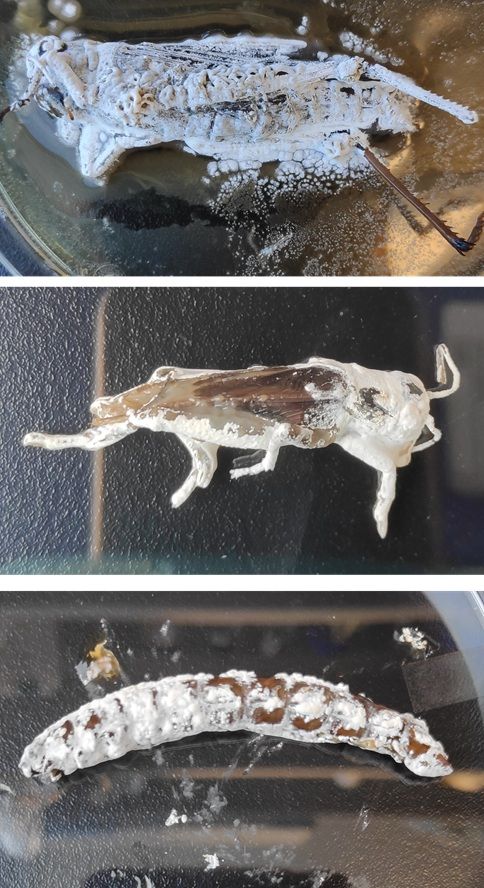
August 6, 2025 at 6:09 PM
More than a billion tons of #chitin are produced on Earth each year. This study shows that the soil #bacterium #Streptomyces venezuelae thrives on chitin from #insect #exoskeletons, using a potent mix of chitinases and a dedicated chitobiose importer @plosbiology.org 🧪 plos.io/45sg4S5
Very cool! More labs should do this! :)
Check out the Ziemert Lab’s new YouTube channel
m.youtube.com/@ZiemertLab
We’ve uploaded short tutorial videos on how to use our tools for genome mining and natural product discovery.
Thanks Semih, @martinaadamek.bsky.social @turgutmesut.bsky.social ! #GenomeMining #SecMet #naturalproducts
m.youtube.com/@ZiemertLab
We’ve uploaded short tutorial videos on how to use our tools for genome mining and natural product discovery.
Thanks Semih, @martinaadamek.bsky.social @turgutmesut.bsky.social ! #GenomeMining #SecMet #naturalproducts
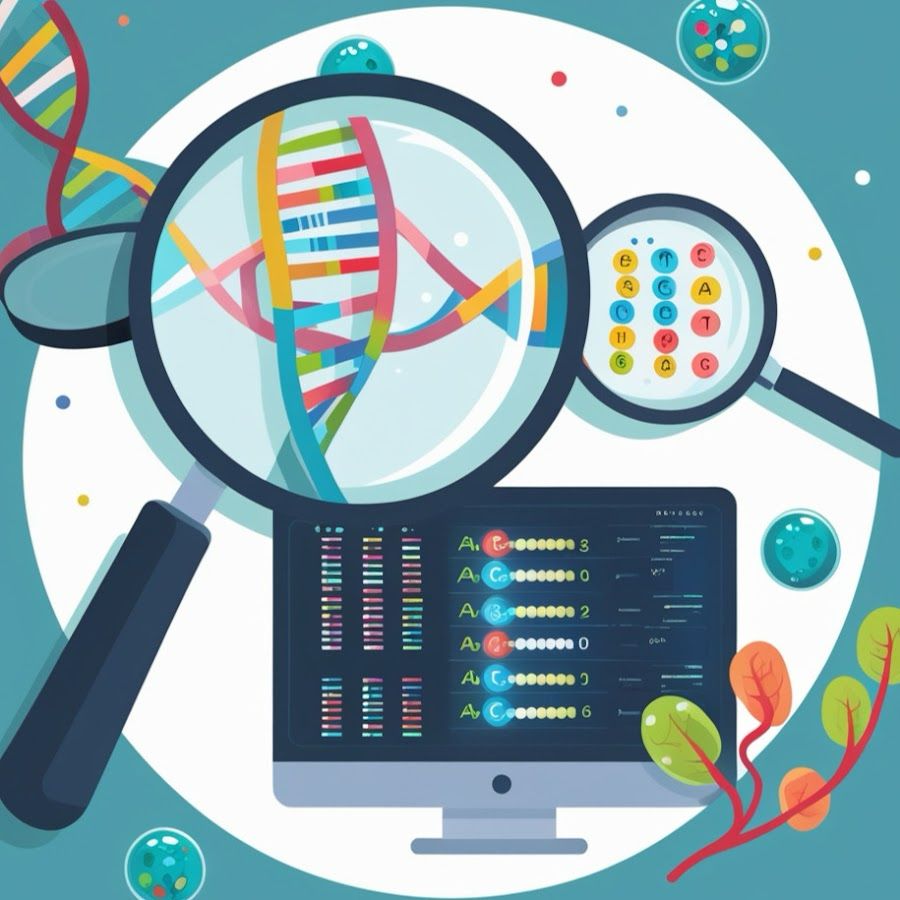
ZiemertLab
The Ziemert lab is interested in the evolution and distribution of bacterial secondary metabolites. These bioactive compounds are especially important in human medicine as the chemical scaffolds are t...
m.youtube.com
July 27, 2025 at 9:57 AM
Very cool! More labs should do this! :)
Reposted by Thom Booth
Check out the Ziemert Lab’s new YouTube channel
m.youtube.com/@ZiemertLab
We’ve uploaded short tutorial videos on how to use our tools for genome mining and natural product discovery.
Thanks Semih, @martinaadamek.bsky.social @turgutmesut.bsky.social ! #GenomeMining #SecMet #naturalproducts
m.youtube.com/@ZiemertLab
We’ve uploaded short tutorial videos on how to use our tools for genome mining and natural product discovery.
Thanks Semih, @martinaadamek.bsky.social @turgutmesut.bsky.social ! #GenomeMining #SecMet #naturalproducts

ZiemertLab
The Ziemert lab is interested in the evolution and distribution of bacterial secondary metabolites. These bioactive compounds are especially important in human medicine as the chemical scaffolds are t...
m.youtube.com
July 8, 2025 at 8:09 PM
Check out the Ziemert Lab’s new YouTube channel
m.youtube.com/@ZiemertLab
We’ve uploaded short tutorial videos on how to use our tools for genome mining and natural product discovery.
Thanks Semih, @martinaadamek.bsky.social @turgutmesut.bsky.social ! #GenomeMining #SecMet #naturalproducts
m.youtube.com/@ZiemertLab
We’ve uploaded short tutorial videos on how to use our tools for genome mining and natural product discovery.
Thanks Semih, @martinaadamek.bsky.social @turgutmesut.bsky.social ! #GenomeMining #SecMet #naturalproducts
Reposted by Thom Booth
📣 Happy to see the journal publication 📄 of our work on Starships 🚀 in Verticillium fungi: terrific work led by @yukiyosato.bsky.social
rdcu.be/exBSp
rdcu.be/exBSp
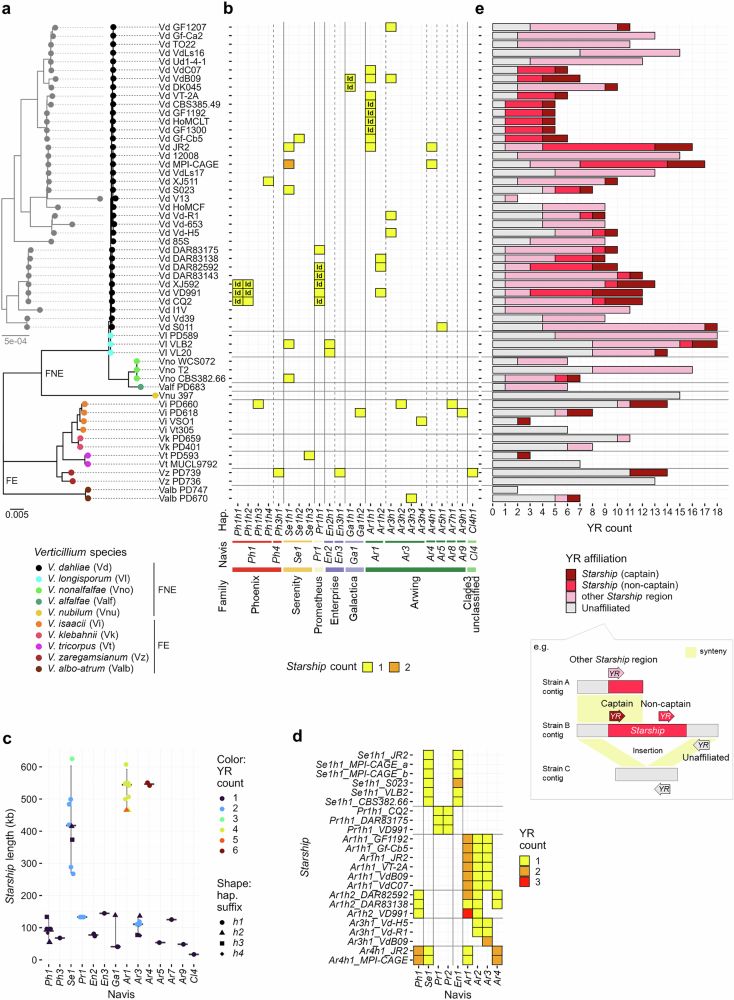
Starship giant transposons dominate plastic genomic regions in a fungal plant pathogen and drive virulence evolution
Nature Communications - Giant transposons, known as ‘Starships’, mediate horizontal gene transfer between fungal genomes. Here, Sato et al. show that Starships occupy genome regions...
rdcu.be
July 24, 2025 at 10:40 AM
📣 Happy to see the journal publication 📄 of our work on Starships 🚀 in Verticillium fungi: terrific work led by @yukiyosato.bsky.social
rdcu.be/exBSp
rdcu.be/exBSp
Reposted by Thom Booth
The mantra “location, location, location” isn’t just about real estate. For life scientists, more than 50% of their productivity can be attributed to the institution where they work, according to a new study. scim.ag/4kKs1YO
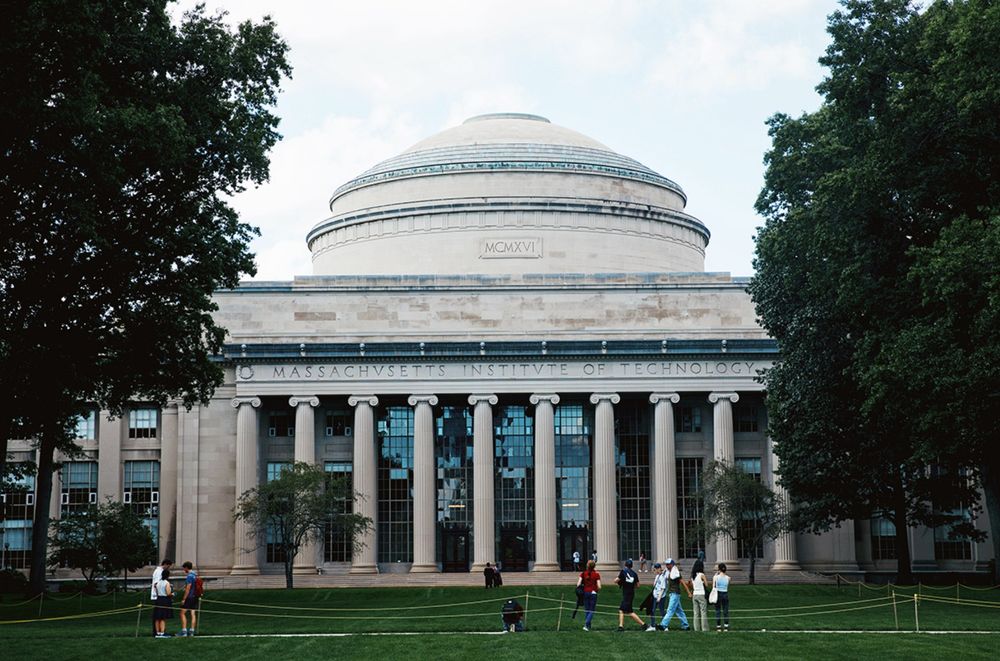
Large study of scientists who move their labs reveals how location drives productivity
Concentrating funding at high-powered universities can maximize output, paper argues, but may sacrifice broader benefits
scim.ag
July 17, 2025 at 1:57 PM
The mantra “location, location, location” isn’t just about real estate. For life scientists, more than 50% of their productivity can be attributed to the institution where they work, according to a new study. scim.ag/4kKs1YO
Reposted by Thom Booth
go.bsky.app/8zZNEGV
Great resource to connect early career folks with more senior scientists looking to hire postdocs! 🧪
Great resource to connect early career folks with more senior scientists looking to hire postdocs! 🧪
July 17, 2025 at 3:41 AM
go.bsky.app/8zZNEGV
Great resource to connect early career folks with more senior scientists looking to hire postdocs! 🧪
Great resource to connect early career folks with more senior scientists looking to hire postdocs! 🧪
Reposted by Thom Booth
Crystal clear? Not quite!
Our new paper explores how atoms with similar atomic numbers can be misidentified with X-ray crystallography, and revises the chemical structures of a series of nucleoside natural products.
pubs.acs.org/doi/10.1021/...
Our new paper explores how atoms with similar atomic numbers can be misidentified with X-ray crystallography, and revises the chemical structures of a series of nucleoside natural products.
pubs.acs.org/doi/10.1021/...

Reconsidering the Structures of Tetillapyrone, Nortetillapyrone, Ochraceopyronide, and Rhizoaspergillin A
In this study, we revise the structures of the marine sponge-derived pyrone-deoxyribosides tetillapyrone and nortetillapyrone, as well as the semisynthetic derivative tetillapyrone diacetate, to the n...
pubs.acs.org
July 4, 2025 at 2:46 AM
Crystal clear? Not quite!
Our new paper explores how atoms with similar atomic numbers can be misidentified with X-ray crystallography, and revises the chemical structures of a series of nucleoside natural products.
pubs.acs.org/doi/10.1021/...
Our new paper explores how atoms with similar atomic numbers can be misidentified with X-ray crystallography, and revises the chemical structures of a series of nucleoside natural products.
pubs.acs.org/doi/10.1021/...
Reposted by Thom Booth
A great story begun by Siobhan Dorai-Raj and taken over the line by @thombooth.bsky.social and Juan Pablo Gomez-Escribano. It's been tremendous fun and wonderful to watch old lab members become collaborators and leaders!
July 15, 2025 at 9:42 AM
A great story begun by Siobhan Dorai-Raj and taken over the line by @thombooth.bsky.social and Juan Pablo Gomez-Escribano. It's been tremendous fun and wonderful to watch old lab members become collaborators and leaders!
Reposted by Thom Booth
New Independent Fellowship position in Microbiology to launch your lab in our department @johninnescentre.bsky.social (UK). We are conducting a broad search in the area of plant-associated microbial interactions. Message me if you have any questions.
Apply here: www.jic.ac.uk/vacancies/in...
Apply here: www.jic.ac.uk/vacancies/in...

Independent Fellowship in Plant-Associated Microbial Interactions | John Innes Centre
An exciting opportunity for an Independent Fellowship in Plant-Associated Microbial Interactions has arisen at the John Innes Centre. To read the full job description for this role…
www.jic.ac.uk
July 10, 2025 at 6:28 AM
New Independent Fellowship position in Microbiology to launch your lab in our department @johninnescentre.bsky.social (UK). We are conducting a broad search in the area of plant-associated microbial interactions. Message me if you have any questions.
Apply here: www.jic.ac.uk/vacancies/in...
Apply here: www.jic.ac.uk/vacancies/in...
Reposted by Thom Booth
Fantastic opportunity to start your independent career at the JIC here. Great startup package. Repost = nice. Thank you!!!
New Independent Fellowship position in Microbiology to launch your lab in our department @johninnescentre.bsky.social (UK). We are conducting a broad search in the area of plant-associated microbial interactions. Message me if you have any questions.
Apply here: www.jic.ac.uk/vacancies/in...
Apply here: www.jic.ac.uk/vacancies/in...

Independent Fellowship in Plant-Associated Microbial Interactions | John Innes Centre
An exciting opportunity for an Independent Fellowship in Plant-Associated Microbial Interactions has arisen at the John Innes Centre. To read the full job description for this role…
www.jic.ac.uk
July 10, 2025 at 6:52 AM
Fantastic opportunity to start your independent career at the JIC here. Great startup package. Repost = nice. Thank you!!!
Our new preprint is out! EEC1 is a massive 4.2 Mb secondary chromosome from Embleya australiensis. Conserved across Embleya, these are the first replicons of their kind in Actinobacteria and the largest secondary replicons in bacteria identified to-date!
1/6 🦠🧪🧬🔬
www.biorxiv.org/content/10.1...
1/6 🦠🧪🧬🔬
www.biorxiv.org/content/10.1...
Evidence supporting the first secondary chromosome in actinobacteria as a hallmark of the Embleya genus
Embleya is a genus within the family Streptomycetaceae, a group of actinobacteria with outstanding capacity for production of specialised metabolites and a strikingly complex life cycle. In this work, we sequenced the complete genome of the new species Embleya australiensis MST-11070 and validated the assembly using optical mapping. The genome of E. australiensis MST-11070 consists of a 7.1 Mb linear chromosome and three additional replicons, including a 4.2 Mb linear replicon, EEC1, significantly larger than all previously described secondary replicons from bacteria. EEC1 is typified by its similar composition to the chromosome in terms of GC-content, codon usage and gene functions. It also carries terminal inverted repeats identical to the chromosome. EEC1 is enriched in biosynthetic gene clusters (BGCs), including the only copy of the BGCs for the spore pigment and the surfactant peptide SapB, metabolites essential for the organism's lifecycle. EEC1 contains an origin of replication with at least some chromosomal properties, and its replication is likely to depend on functions provided by chromosomally located genes. Further comparison of Embleya spp. genomes suggests that EEC1-like replicons are conserved across the genus, in contrast to other known large linear extrachromosomal replicons (megaplasmids) in the order. EEC1 is thus a hallmark of the Embleya genus and is central to its evolution within the Streptomycetaceae family. We propose EEC1 as a secondary chromosome, distinct from previously described secondary chromosomes that utilise plasmid-like replication mechanisms (chromids) and the largest secondary replicon reported in bacteria, to date. ### Competing Interest Statement Ernest Lacey is a Founder, Board Member, and the Managing Director of Microbial Screening Technology Pty. Ltd. The authors declare no competing financial interests. Biotechnology and Biological Sciences Research Council, https://ror.org/00cwqg982, BB/P021506/1, BBS/E/J/000PR9790, BB/X01097X/1, BB/M011216/1 Novo Nordisk Foundation, https://ror.org/04txyc737, NNF22OC0078997
www.biorxiv.org
July 9, 2025 at 11:56 AM
Our new preprint is out! EEC1 is a massive 4.2 Mb secondary chromosome from Embleya australiensis. Conserved across Embleya, these are the first replicons of their kind in Actinobacteria and the largest secondary replicons in bacteria identified to-date!
1/6 🦠🧪🧬🔬
www.biorxiv.org/content/10.1...
1/6 🦠🧪🧬🔬
www.biorxiv.org/content/10.1...
Reposted by Thom Booth
GATOR-GC is out at @narjournal.bsky.social!! Check out our new targeted genome mining tool featuring a novel similarity metric to efficiently compare and deduplicate gene clusters.
We uncover biosynthetic diversity missed by other genome mining tools
academic.oup.com/nar/article/...
We uncover biosynthetic diversity missed by other genome mining tools
academic.oup.com/nar/article/...
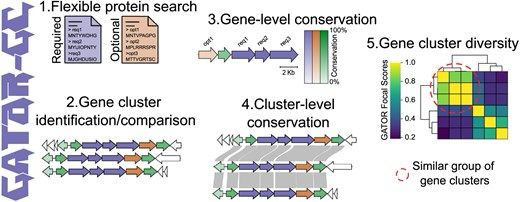
Targeted genome mining with GATOR-GC maps the evolutionary landscape of biosynthetic diversity
Abstract. Gene clusters, groups of physically adjacent genes that work collectively, are pivotal to bacterial fitness and valuable in biotechnology and med
academic.oup.com
July 8, 2025 at 12:04 PM
GATOR-GC is out at @narjournal.bsky.social!! Check out our new targeted genome mining tool featuring a novel similarity metric to efficiently compare and deduplicate gene clusters.
We uncover biosynthetic diversity missed by other genome mining tools
academic.oup.com/nar/article/...
We uncover biosynthetic diversity missed by other genome mining tools
academic.oup.com/nar/article/...
Reposted by Thom Booth
Genetic compatibility and environmental co-occurrence drive the dissemination of #AntibioticResistance genes
Co-occurrence of bacteria in the human #microbiome and #wastewater contributes to gene transfer
Co-occurrence of bacteria in the human #microbiome and #wastewater contributes to gene transfer

Genetic compatibility and ecological connectivity drive the dissemination of antibiotic resistance genes - Nature Communications
The dynamics of antimicrobial resistance gene transfer remain unclear. Here, by integrating bacterial genome and metagenome data with machine learning the authors show that genetic incompatibility is a main limiting factor, while co-occurrence of bacteria in the human microbiome and wastewater contributes to gene transfer.
bit.ly
June 1, 2025 at 8:48 AM
Genetic compatibility and environmental co-occurrence drive the dissemination of #AntibioticResistance genes
Co-occurrence of bacteria in the human #microbiome and #wastewater contributes to gene transfer
Co-occurrence of bacteria in the human #microbiome and #wastewater contributes to gene transfer
Reposted by Thom Booth
🔥Be sure to read the latest Hot Off the Press article by Bob Hill & @andysuth14.bsky.social at @uofgchem.bsky.social on their selection of 32 recent papers covering the latest research in bioorganic chemistry & novel natural products #natprod
Find it below🔽
pubs.rsc.org/en/content/a...
Find it below🔽
pubs.rsc.org/en/content/a...

Hot off the Press
A personal selection of 32 recent papers is presented covering various aspects of current developments in bioorganic chemistry and novel natural products such as melichuniione A from Melicope chunii.
pubs.rsc.org
May 15, 2025 at 11:04 AM
🔥Be sure to read the latest Hot Off the Press article by Bob Hill & @andysuth14.bsky.social at @uofgchem.bsky.social on their selection of 32 recent papers covering the latest research in bioorganic chemistry & novel natural products #natprod
Find it below🔽
pubs.rsc.org/en/content/a...
Find it below🔽
pubs.rsc.org/en/content/a...
Can we all agree to stop using the word 'bacterial' in the titles of studies that only investigate proteobacteria. Okay? Thanks!
🧪🦠
🧪🦠
May 17, 2025 at 10:13 AM
Can we all agree to stop using the word 'bacterial' in the titles of studies that only investigate proteobacteria. Okay? Thanks!
🧪🦠
🧪🦠
Reposted by Thom Booth
📣 🥳 🧑💻 Our department is hiring:
Tenure-Track Assistant Professor / Associate Professor in Bioinformatics at Aarhus University, Denmark
Deadline June 1st
Thanks for sharing!
mbg.au.dk/en/news-and-...
Tenure-Track Assistant Professor / Associate Professor in Bioinformatics at Aarhus University, Denmark
Deadline June 1st
Thanks for sharing!
mbg.au.dk/en/news-and-...

Tenure-Track Assistant Professor / Associate Professor in Bioinformatics at Aarhus University, Denmark - Vacancy at Aarhus University
Vacancy at Department of Molecular Biology and Genetics - BiRC - Bioinformatics Research Center, Aarhus University
mbg.au.dk
May 16, 2025 at 12:35 PM
📣 🥳 🧑💻 Our department is hiring:
Tenure-Track Assistant Professor / Associate Professor in Bioinformatics at Aarhus University, Denmark
Deadline June 1st
Thanks for sharing!
mbg.au.dk/en/news-and-...
Tenure-Track Assistant Professor / Associate Professor in Bioinformatics at Aarhus University, Denmark
Deadline June 1st
Thanks for sharing!
mbg.au.dk/en/news-and-...
🚨getphylo workshop announcement🚨
(Please share!)
Are you interested in building genome-scale phylogenies - fast? Or want to explore the evolution of gene clusters? Then getphylo might be the tool for you!
I will be running online workshops on the 26th and 27th May. 🧪💻 1/3
(Please share!)
Are you interested in building genome-scale phylogenies - fast? Or want to explore the evolution of gene clusters? Then getphylo might be the tool for you!
I will be running online workshops on the 26th and 27th May. 🧪💻 1/3
May 16, 2025 at 1:21 PM
🚨getphylo workshop announcement🚨
(Please share!)
Are you interested in building genome-scale phylogenies - fast? Or want to explore the evolution of gene clusters? Then getphylo might be the tool for you!
I will be running online workshops on the 26th and 27th May. 🧪💻 1/3
(Please share!)
Are you interested in building genome-scale phylogenies - fast? Or want to explore the evolution of gene clusters? Then getphylo might be the tool for you!
I will be running online workshops on the 26th and 27th May. 🧪💻 1/3
Reposted by Thom Booth
New preprint led by @brunoluviano.bsky.social & Fernando Santos.
We show that filamentation enhances bacterial survival under toxic stress — not as collateral damage, but as a regulated morphological response.
TL;DR: Filamentation isn’t a symptom, it’s a strategy!
www.biorxiv.org/content/10.1...
We show that filamentation enhances bacterial survival under toxic stress — not as collateral damage, but as a regulated morphological response.
TL;DR: Filamentation isn’t a symptom, it’s a strategy!
www.biorxiv.org/content/10.1...
May 15, 2025 at 5:23 PM
New preprint led by @brunoluviano.bsky.social & Fernando Santos.
We show that filamentation enhances bacterial survival under toxic stress — not as collateral damage, but as a regulated morphological response.
TL;DR: Filamentation isn’t a symptom, it’s a strategy!
www.biorxiv.org/content/10.1...
We show that filamentation enhances bacterial survival under toxic stress — not as collateral damage, but as a regulated morphological response.
TL;DR: Filamentation isn’t a symptom, it’s a strategy!
www.biorxiv.org/content/10.1...
Reposted by Thom Booth
New preprint led by @brunoluviano.bsky.social & Fernando Santos.
We show that filamentation enhances bacterial survival under toxic stress — not as collateral damage, but as a regulated morphological response.
TL;DR: Filamentation isn’t a symptom, it’s a strategy!
www.biorxiv.org/content/10.1...
We show that filamentation enhances bacterial survival under toxic stress — not as collateral damage, but as a regulated morphological response.
TL;DR: Filamentation isn’t a symptom, it’s a strategy!
www.biorxiv.org/content/10.1...
May 15, 2025 at 7:52 PM
Reposted by Thom Booth
A new look for BacDive 🖥️🦠!
We are excited to introduce the new BacDive design✨ and now invite all users to try it out. Tell us what you think, we look forward to your feedback!
You can find it at 👉 beta.bacdive.dsmz.de or by clicking the red “New Design” button on every BacDive page.
We are excited to introduce the new BacDive design✨ and now invite all users to try it out. Tell us what you think, we look forward to your feedback!
You can find it at 👉 beta.bacdive.dsmz.de or by clicking the red “New Design” button on every BacDive page.

May 13, 2025 at 6:33 AM
A new look for BacDive 🖥️🦠!
We are excited to introduce the new BacDive design✨ and now invite all users to try it out. Tell us what you think, we look forward to your feedback!
You can find it at 👉 beta.bacdive.dsmz.de or by clicking the red “New Design” button on every BacDive page.
We are excited to introduce the new BacDive design✨ and now invite all users to try it out. Tell us what you think, we look forward to your feedback!
You can find it at 👉 beta.bacdive.dsmz.de or by clicking the red “New Design” button on every BacDive page.
Reposted by Thom Booth
Weed control, essential for food security, normally relies on herbicides but these have limited modes of action. In this study, the authors explore COT-metsulfuron methyl as a herbistatic, offering an alternative route to weed control.
Read for free:
doi.org/10.1039/D4SC...
#ChemSky
Read for free:
doi.org/10.1039/D4SC...
#ChemSky

In search of herbistasis: COT-metsulfuron methyl displays rare herbistatic properties
Weed management is an essential intervention for maintaining food security and protecting biodiversity but is heavily reliant on chemical control measures (i.e., herbicides). Concerningly, only one herbicide has been developed with a new mode of action (MOA) since the 1980s. Therefore, alternative strategies
doi.org
May 11, 2025 at 8:30 AM
Weed control, essential for food security, normally relies on herbicides but these have limited modes of action. In this study, the authors explore COT-metsulfuron methyl as a herbistatic, offering an alternative route to weed control.
Read for free:
doi.org/10.1039/D4SC...
#ChemSky
Read for free:
doi.org/10.1039/D4SC...
#ChemSky

